Iranian Classical Music in Finland
| Iranian Classical Music in Finland | ||||
|---|---|---|---|---|
|
Practitioners and people who know the tradition well
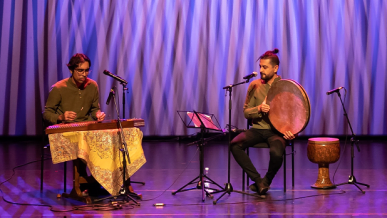
Classical music is an important part of life for Iranian people living in and outside Iran. In Finland there are over 10 000 persons with Iranian background. Today it is common for Iranian immigrants and many Finns to play, dance and listen to Iranian music in Finland. They also take part in different cultural ceremonies and feasts like Nowruz (Iranian new year) and Yalda (the longest night of the year). Both festivities are included in the Representative List of the Intangible Cultural Heritage of Humanity of UNESCO.
Bands and associations like Road Ensemble in Jyväskylä, Baran Band in Helsinki, Aava music association in Turku and the music group of Aalto Iranian association (AIA) in Helsinki are some of the active ones in playing and teaching Iranian music all over Finland.
Practising of the tradition
The historical taste of music in the east as well as Iran, unlike in the west, have had more tendency to monophonic music. There is no doubt that this taste has influenced the course of development and evolution of Dastgahs leading to the current form. Since centuries ago, European musical system has attempted to find solutions for vertical expansion of music, besides the attention paid to the possibilities for horizontal expansion. This way, novel musical structures have been created. Based on this idea in horizontal expansion, the melody has the most important role in making music while in vertical expansion, harmony has the main role. On the contrary, the eastern musical systems, including the Iranian one, focused exclusively on the horizontal expansion by which achieved different aesthetics. The Dastgah system was one of the solutions of Iranians for horizontal expansion of music in time, with the goal to construct an artistic musical system. Briefly, there is a reciprocal relation between Dastgah music system and monophonic music. Iranian Dastgah music in recent two centuries has been categorized in seven Dastgah -s and five Avaz -s. Seven Dastgah -s are Shur, Nava, Segah, Homayun, Chahargah, Mahoor and Rast Panjgah. The Avaz -s are Abu Ata, Bayate Tork, Afshari, Dashti, and Bayate Esfehan.
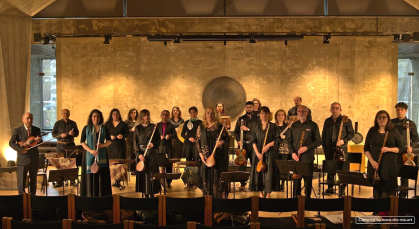
Also about the differences between Iranian music intervals and the intervals in western classical music it should be mentioned that in western classical music, intervals are defined based on equal temperament theory. So there are just 2 possible options for the second intervals, the whole step (for example between C and D ) and half step (between C and C sharp). But in Iranian music there are 4 different options for the second interval. intervals by the length of ½, ¾, 4/4, and 5/4 of step. Among Iranian traditional instruments string instruments such as tar, santour, setar, oud, and wind instruments such as ney and Iranian drums such as daf and tombak could be mentioned.
Although it is hard to trace the history of Iranian music in Finland, it seems that the first signs of the Iranian music culture have come into existence during the immigration wave during and after the Iranian revolution in 1979. Many Iranians left Iran due to political and social situations, including many artists and musicians. For instance, Iranian engineer and musician Zekrollah Aflatuni left Iran in the ‘80s and founded a family band in Finland and published an album in 1994 called Taraneye Del (The melody of my heart). In the band he played santour. His daughter, Rioja, played violin and his son Aram played the drums.
After the last two decades many Iranian musicians and students have come to Finland to study in music universities like Sibelius Academy in Helsinki, Department of Music in the University of Jyväskylä and the music universities in Lahti and Tampere. Some of them have stayed in Finland after graduation and have founded musical bands. This has allowed a wide variety of music bands to influence different cities. Some of them play Iranian traditional classical music and Iranian folk music like Kurdish music, and some play fusion and multicultural music, in collaboration with jazz music, Finnish folk and other world musical cultures.
The Road Ensemble was founded in 2015 by Farshad Sanati and Fardin Abbasi in Jyväskylä Finland. They perform Iranian classical music (Dastgah System) and Kurdish folk music. Road has performed in several concerts, workshops and lectured about Iranian music all over Finland. They have had several collaborations with guest musicians from Finland and other countries during the last years.
The Baran band was founded in 2013 by brothers Gian and Marouf Majidi. Barans music consist own compositions and new arrangements of old Persian and Kurdish music, and its members represent different musical cultures, genres and roots.
The Aava music association has had annual workshops and school concerts under the supervision of Shadi Fathi (Iranian tar and setar player) in Turku.
The music group of Aalto Iranian association was founded by a group of Iranian students of Aalto University in 2020.
The background and history of the tradition
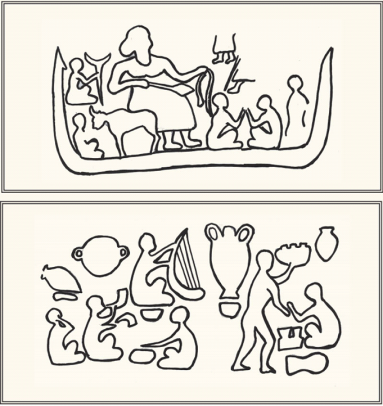
The history of Iranian classical music goes back to centuries ago.The earliest documentation of a mode set in Iranian music is a set of seven modes titled Rāhhā-ye Khosrawāni, (equivalent to “Royal Passages”) which was attributed to Bārbad, the legendary musician at the court of King Khosraw Parviz who lived in sixth century, was one of the last king of Sasanian Empire and died few years before the time that the dynasty was collapsed by the Muslim conquest of Iran. After that significant musicians and theorists like Farabi (d.950), Ormavi (d.1294) and Maraqi (d.1435) worked on Iranian music. This music has common roots with the other musical cultures of that area like Turkish classical music (Ottoman Music), and Arabic music. In the last 600 years, they have been gradually separated and Iranian music has turned from Maqam music to Dastgah system.
Dastgah in Iranian music is defined as a multimodal cycle, a collection of some melodic models, which are organised in a cyclic pattern based on a modal foundation. It was used for the first time as a new term in the late 1800th and early 1900th centuries. The word Dastgah is used instead of Maqam in Iranian music, most probably from the Qajar dynasty period onwards (19th century). Dastgah is a combination of two words. “Dast” and “Gah”. “Dast” in Persian means hand, and “Gah refers to the position of the fingers on the neck of the instrument. The Dastgah system is one among many different systems of categorizing music in different musical cultures. that is classifying collections of Gushehes (short melodies) based on their similarities of the mode and scale. It was only one hundred and fifty years ago when Iranian music was categorized in seven Dastgahs and five Avazes.
The word “Radif” in Persian language means row or order. Radif is a collection of Iranian traditional melodies, gathered as different instrumental and vocal narratives and organised in special order in the form of different Dastgahs and Avazes. In October 2009 the Radif of Iranian classical music was inscribed in the Representative list of the Intangible Cultural Heritage of Humanity of UNESCO
The transmission of the tradition
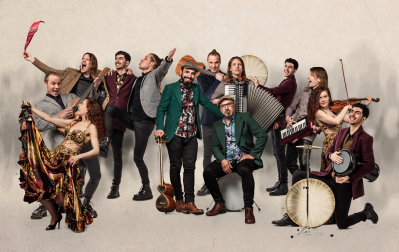
Iranian music is one of the oldest musical cultures in the world. The oldest sign of this history goes back to about 6000 BC. The cylinder-seal, which is probably the oldest document related to mankind on music history, was found atProvince on the Susiana Plain. Musicians, a harp player, a drummer and flute player and a singer are portrayed on the pottery.
Iranian classical music culture has been unknown for the Finnish people and the Finnish musicians, one of the reasons being that it has the different structure and theory compared to Western classical music and totally different instruments. During the last years the Iranian musicians who have graduated from music schools in Finland have had several concerts and workshops and courses about Iranian music. Project “An Entry to Iranian music” was a series of lectures about Iranian music in 2019 in the Museum of Impossible Form in Helsinki. The work of associations like “Aava music association” in Turku and “Santour Taivaan Tähti” in Jyväskylä have played an important part in making the music more known. Some companies like Tusman studio founded by the Iranian tar player Aman Askarizad, have concentrated in producing live music events and concerts for Iranian and other non-European artists from across the world in Finland.
The future of the tradition
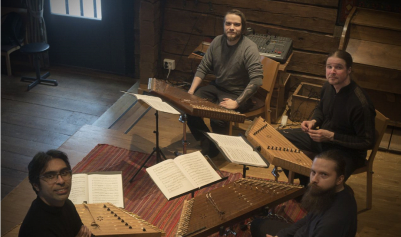
With this increasing trend there is a great prospect that Iranian music and its instruments will become more known to Iranian immigrants and their children, as well as to Finnish musicians. Later concerts and workshops will have more audiences and participants to hear and know about this musical culture, its theory and its rich history. It is also important to support authors and translators in publishing articles and books that could be used in music academies and schools.
The community/communities behind this submission
The article was born as part of the project of Ambassadors of Living Heritage in 2023 and was written by Farshad Sanati
Bibliography and links to external sources of information
Internet sources
Chogha Mish - Wikipedia
Videos
Khazan (autumn), A performance in Sibelius Academi
Litterature
During, Jean. "Dastgāh". Encyclopædia Iranica. Retrieved 2012-08-21.
Farhat, Hormoz (1990). The Dastgah Concept in Persian Music. Cambridge University Press (published 2004). ISBN 9780521542067.
Lucas, Ann E. (2019). Music of a Thousand Years: A New History of Persian Musical Traditions. University of California Press. ISBN 9780520972032.
Miller, Lloyd (1999). Music and Song in Persia: The Art of Āvāz. University of Utah Press. ISBN 9780874806144.
Nettl, Bruno (1987) The Radif of Persian Music: Studies of Structure and Cultural Context (Elephant & Cat, Champaign)
Sanati, Farshad (2020). An investigation of the value of intervals in Persian music. University of Jyväskylä
Zoni, Ella (1973), Classical Persian Music: An Introduction,Harvard University Press
